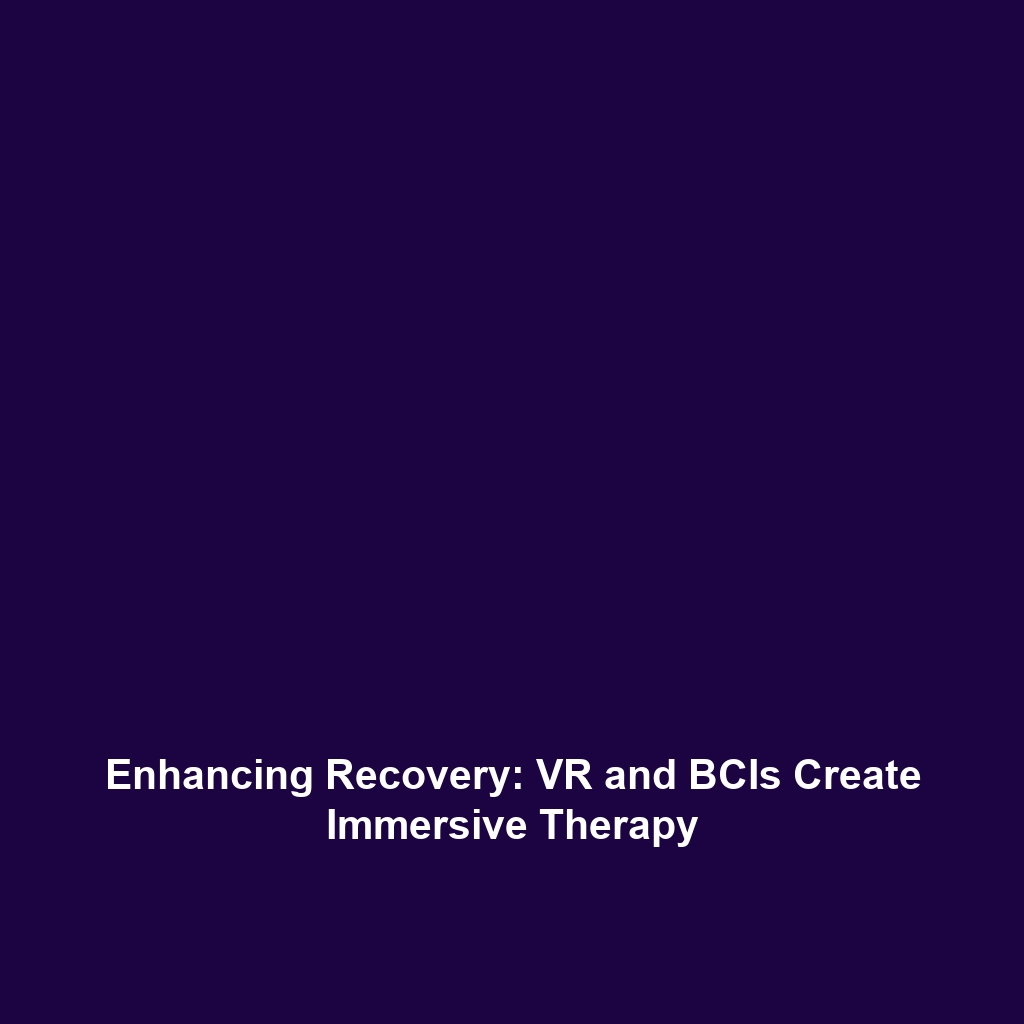Enhancing Virtual and Augmented Reality with Brain-Computer Interfaces
Category: Brain-Computer Interfaces
Topic: Virtual and Augmented Reality: BCIs can enhance VR/AR experiences by providing more intuitive and immersive control methods for interacting with digital environments.
Introduction
In recent years, the realms of Virtual Reality (VR) and Augmented Reality (AR) have witnessed significant advancements, particularly through the integration of Brain-Computer Interfaces (BCIs). These technologies allow for a more dynamic and intuitive control method, transforming the way users interact with digital environments. BCIs enable direct communication between the brain and devices, thus enhancing the immersive experience of VR/AR applications. This article delves into the profound implications of BCIs on VR/AR technology, shedding light on how they contribute to a more engaging and user-centric digital experience.
Key Concepts
Understanding Virtual and Augmented Reality
Virtual Reality immerses users in a completely computer-generated environment, whereas Augmented Reality overlays digital information onto the real world. The integration of BCIs into these systems allows users to control and interact with simulations and real-world overlays using their thoughts, resulting in a seamlessly immersive experience.
Principles of Brain-Computer Interfaces
BCIs operate by translating neurological activity into commands, enabling interaction with VR/AR systems without the need for traditional input devices. This breakthrough enhances the user experience by allowing for:
- Real-time feedback and interaction
- Reduced reliance on handheld controllers
- Increased accessibility for individuals with mobility challenges
Applications and Real-World Uses
The applications of BCIs in Virtual and Augmented Reality are vast, enhancing experiences across various fields:
- Gaming: Players can control characters using thoughts, creating a more immersive gaming experience.
- Healthcare: BCIs assist in rehabilitation by enabling patients to engage with therapeutic activities in a virtual setting.
- Military Training: Soldiers can receive real-time information and control training simulations through thought alone.
By illustrating how BCIs enhance VR/AR experiences, various sectors stand to benefit from greater engagement and effectiveness.
Current Challenges
Despite the exciting prospects, several challenges exist in the development and application of BCIs within VR/AR environments:
- Technological limitations: Current BCI technologies can struggle with accuracy and latency, impacting user experience.
- Ethical considerations: The use of BCIs raises concerns regarding privacy and data security.
- Accessibility issues: High costs and accessibility barriers can prevent widespread adoption of BCI applications in VR/AR.
Future Research and Innovations
The future of BCIs in VR/AR is ripe with potential innovations. Ongoing research aims to refine signal processing techniques, improving the accuracy of brain signals and reducing latency. Breakthrough technologies, such as non-invasive electrodes and enhanced machine learning algorithms, could further revolutionize user interaction. These advancements promise to make VR/AR more accessible and engaging for users, ultimately transforming many industries.
Conclusion
As we explore the intersection of Brain-Computer Interfaces with Virtual and Augmented Reality, it is clear that BCIs have the potential to significantly enhance user experiences in digital environments. By providing intuitive and immersive control methods, these technologies reshape how individuals interact with virtual spaces. Moving forward, further research and technological advancements are essential to overcome existing challenges and unlock the full potential of BCIs in VR/AR applications.
For more information on related topics, consider exploring our articles on future innovations in BCI technology and recent advancements in VR/AR experiences.

Leave a Reply